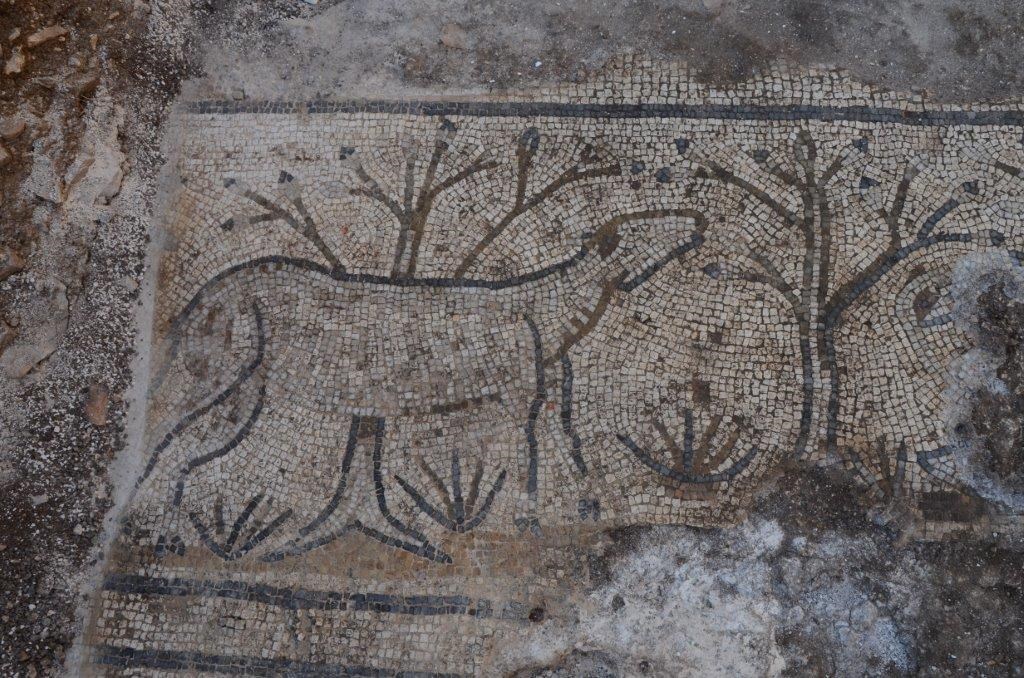In June 2011, a floor mosaic dating from the Late Antiquity, approximately 70 m2 in size, was discovered under the soil. The mosaic belongs to the residential quarters of a Roman rural estate. It is a polychrome floor mosaic made in the second half of the 4th century from stone, ceramic tesserae and multi-colored glass paste. In the future, the mosaics should be excavated and presented to tourists and visitors.
In the space delineated by a single and a double black stripe, there are images of domestic and wild animals in a landscape that is their habitat, such as a forest and pasture. The continuous stripe contains an ornamentation of four preserved animal figures moving among the trees or resting beneath them. Viewed from the entrance into the hall, in its depth in front of the opening of the apse, the stripe shows three domestic animals: a ram, a lamb and a sheep.
